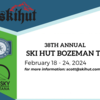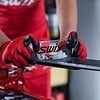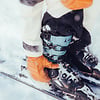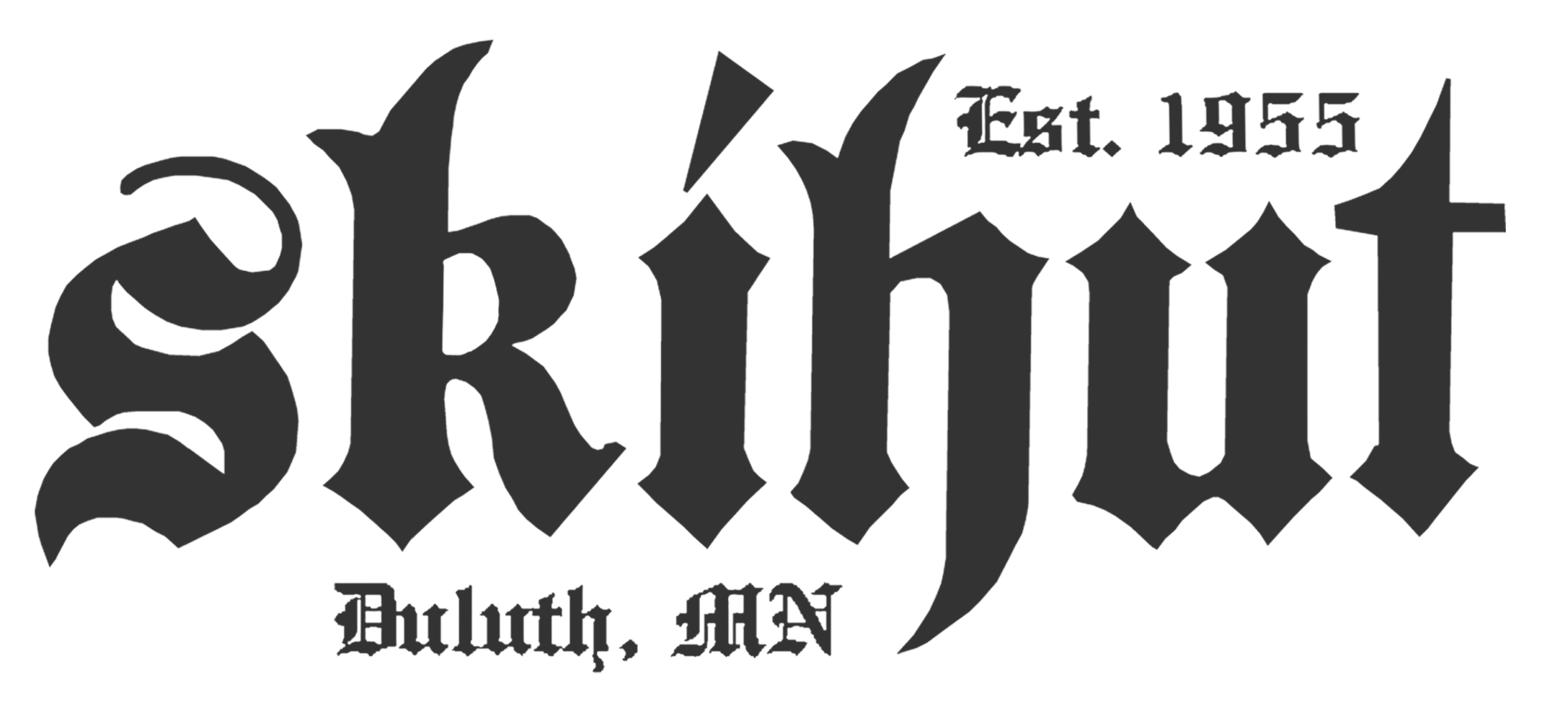Nordic | Crosscountry Boot Buying Guide
Nordic | Crosscountry Boot Buying Guide
Boots. The Key To Skiing Happiness.
At Skihut we carry XC boots fromAlpina,Atomic,Fischer,KV+, andSalomon.
The Bottom Line
Let’s just get to the point. If you don’t like your ski boots, you won’t like to go skiing. The correct boot with the correct fit matters. A LOT! Trying on as many options as possible is highly recommended. The fit of the boot on your foot is what matters. We feel that buying any athletic footwear without knowledge of that footwear’s fit is just a bad idea in general. Go to a good ski shop and try them on. Be patient. Take your time. Always put the boots on just like you would if you were going skiing in them. All the way on. Completely laced, tightened, and buckled. Try boots on with a good, athletic, winter sock (wool, acrylic, or a blend of both - cotton socks get wet, stay wet, freeze, and slouch - blisters and cold feet will not increase your desire to go skiing). Socks are extremely important for winter sports. Please - do not allow extra room for "more socks". The right combo of good socks and good boot fit is far more important to having warm feet than thicker socks are. Your foot needs to be able to flex and breathe inside the boot. If you are concerned about cold feet - invest in OVERBOOTS. Overboots add warmth by covering the OUTSIDE of your boot. Thereby not influencing a proper boot fit! If you like a boot - try it on BOTH feet! Sometimes the other foot will have a bad stitch or a seam in an unfortunate spot. It is best to discover this while you are in the store - not when you are at the trailhead!
Know that any good shop will know how to get a boot really dialed-in to your foot. The boot will almost never be perfect off the show room wall. But there are secrets to customizing a boot so that it can be perfect. There are different ways to tighten boots. There are different ways to lace them. There are different insoles you can put in them. Boots can be stretched or heat-molded. Ask questions and get what you want! Come back to the shop with your questions and for any customization you may need. That’s why we’re here - to help you after the sale!
To Each Their Own
There are several types of Nordic (XC) boots. Each of these types is purpose built with a certain type of Cross Country skier in mind. The most extreme example of this comes from racing. A race skate boot is completely different from a race classic boot.
Skate boots typically have a much higher cuff which lends extra ankle stability to the skier. Skate boots also have a much stiffer sole than a classic boot has. This stiff sole is designed to transfer power into forward motion.
Classic race boots are low, like a running shoe, and are extremely flexible when compared to a skate boot. Classic boots are designed to be fast and efficient in a straight line. They also need to flex easily so the skier can effectively compress the ski to the snow - providing grip (kick) for forward motion. You can now see how a classic boot would be a poor choice for skating and vice-versa.
A combi boot (used for both skate and classic) will usually have a tall, supportive, cuff for skating and a soft sole for classic (combi boots and skate boots can actually look exactly the same). These two attributes give good flexibility for classic skiing combined with good ankle support for skating or for skiing in deeper snow.
Tour boots can have similar attributes with several slight variations available among models. That being said - some combi boots are great for tour skiing and some tour boots are great for combi skiing. Both tour and combi boots compromise performance when used for skating or classic racing. They are good at both - but do not excel at either.
What You Get For Your Money
Now that you have a good idea of what boots are for what type of skiing, you may be wondering why there are $99 boots and $1,000 boots. Good question. Let’s start with tour boots.
Tour boots range from about $100 up to around $250 with several price points along the way. The least expensive tour boots are intended for very occasional skiers. If you think you will be going out less than 6 times a season, these boots will be fine for you. Just know that they are not as warm, nor as supportive, as the more expensive versions. And, they are usually less comfortable as well.
If you will ski more than 6 times a season - get a more expensive boot! The cheap boots will wear out much faster. This is a fact. Mid-level tour boots will have a more durable upper and sole. They will also have a more stable heel counter and better insulation. Higher-end tour boots will have even better ankle support. They will also have better liners in the upper. These liners allow your foot to breathe better, reducing moisture build-up. Moisture can lead to cold feet. A more comfortable foot bed is also often found in the higher-end tour boots. These boots will often offer some degree of heat molding customization as well. Meaning the shop heats the boot and it cools around the customer's foot for a perfect fit!
Classic (race) boots range from about $140 to around $650. The less expensive versions are great boots. They are cozy and warm but lack specific performance. They are OK race boots but are actually really great tour boots. The best bang for your buck is in the $250 to $350 range. These boots have great specific performance features while remaining decently warm and somewhat supportive. These boots also usually have a more forgiving fit and accommodate a wider variety of foot shapes. The highest end classic race boots are no-compromise speed machines. They are almost always very narrow and lack insulation which helps to make them very light (literally less boot for your $$). They are often heat mold-able, with some being totally heat mold-able, like a downhill boot. High-end classic boots may also have flex options - some are better for shorter, more explosive, races. While others excel at longer races.
Skate boots typically range from $200 to over $1000. The less expensive versions are usually cozy and warm - but lack high performance. The bang for your buck range is $350 - $600. Again - these models will give you great performance with warmth and a forgiving fit. They will also have stiffer soles to aid in efficient power transfer. The high-end versions (we call them Super Boots) spare no expense when it comes to flat-out speed. There is usually a lot of carbon fiber involved, and custom molding options are the norm. Again - you will lose some warmth here, so an overboot is often used when training or racing below 20* F in a "Super Boot".
The Takeaways
We, obviously, strongly suggest buying your new boots (and ALL of your ski gear) at a local shop. Local shops are staffed by local experts who love to ski! These folks know a lot of stuff. Local shops will also help you after the sale with warranty service when needed, with tips and customization, and with possible upgrades. A good relationship with your local ski shop will only amplify your skiing experience.
Have fun out there!


 Shop
Shop
 Service & Repair
Service & Repair
 38th Annual Ski Hut Bozeman Trip
38th Annual Ski Hut Bozeman Trip
 Wax Clinics
Wax Clinics
 Ski Hut Blog
Ski Hut Blog
